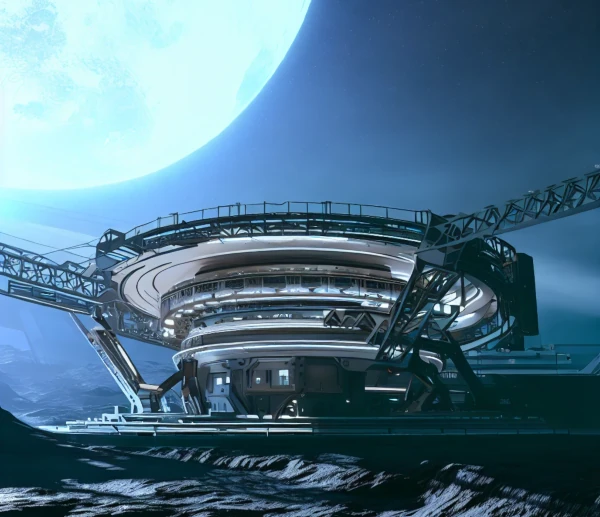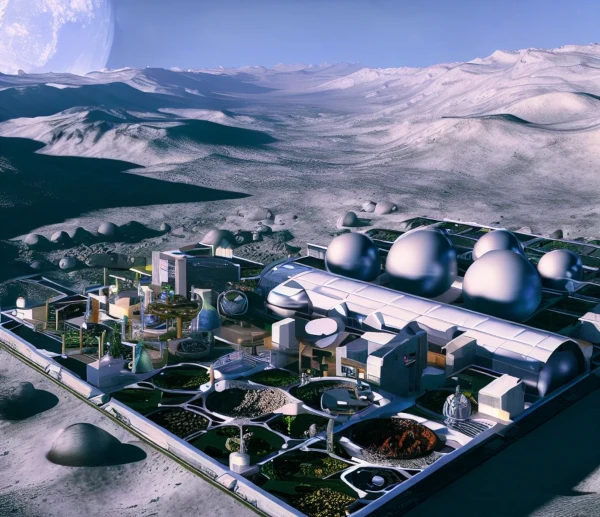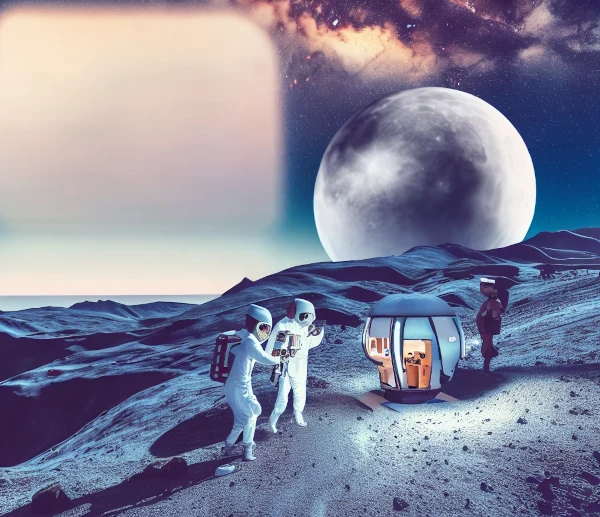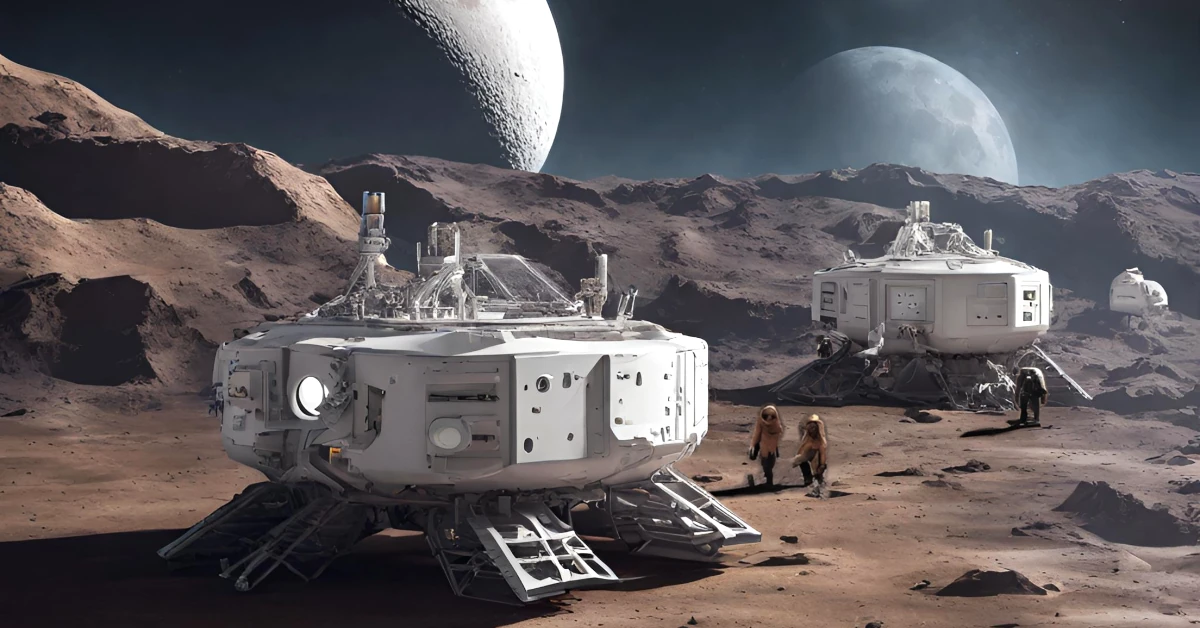Could the Moon be our next home? Let us explore the possibilities of living on Earth’s closest celestial neighbor, The Moon.
Live on the Moon
Earth’s closest celestial neighbor has always fascinated us, from its gentle glow in the night sky to its mysterious craters and valleys. But what if we could take our fascination a step further and actually make the Moon our home?
In this article, we’ll explore four interesting possibilities for living on the Moon and discuss how we could live on the moon:
- Building a lunar base: This could be a temporary or permanent base that would serve as a hub for scientific research, exploration, and resource extraction.
- Creating self-sustaining lunar colonies: These colonies would be designed to produce their own food, water, and energy, and would be largely independent from Earth.
- Developing lunar tourism: Lunar tourism would offer people the opportunity to visit the Moon and experience its unique environment.
- Mining the Moon for resources: The Moon is rich in valuable resources, such as water ice, helium-3, and rare-earth metals. Mining these resources could help to fuel Earth’s economy and support future space exploration missions.
We’ll discuss the challenges and opportunities that each of these possibilities presents, and explore what it might take to make them a reality.
1. Building a Lunar Base: The Gateway to Lunar Exploration
A lunar base would be our starting point for exploring and inhabiting the Moon. This base could either be a temporary station or a permanent structure. Imagine it as a home away from home, a hub for scientific studies, space exploration, and resource gathering right on the Moon’s surface.

Pros:
- Scientific Research: A lunar base would provide an invaluable platform for scientific research. Scientists could conduct experiments in the lunar environment, advancing our understanding of the Moon and beyond.
- Preparation for Further Exploration: It would act as a stepping stone for more extended missions, like those to Mars or beyond. Astronauts could use it to prepare, acclimate, and gather essential data for future interplanetary travels.
- Resource Extraction: Establishing a base would allow us to extract resources present on the Moon, like water ice and minerals. These resources could be used locally or even sent back to Earth.
Challenges:
- Harsh Environment: The Moon poses harsh environmental challenges, including extreme temperatures, low gravity, and high radiation levels. Designing structures and systems to withstand these conditions is crucial.
- Costs and Resources: Building and maintaining a lunar base demand substantial financial investment and resources. Cost-effective construction and sustainable operations are vital considerations.
- Logistics: Transporting materials, equipment, and personnel to the Moon is a complex logistical task that needs precise planning and execution.
2. Creating Self-Sustaining Lunar Colonies: Moon-Powered Habitats
Imagine colonies on the Moon designed to sustain themselves, producing their own food, water, and energy. These lunar communities could eventually reduce their dependence on Earth and open up new possibilities for long-term habitation.

Pros:
- Sustainability: Self-sustaining colonies would lessen reliance on Earth, enhancing long-term sustainability and resilience.
- Exploration Independence: The ability to produce essentials locally would enable prolonged lunar exploration without the need for constant resupply missions.
- Knowledge and Technology: Developing the technology for self-sustaining colonies would drive innovation and potentially lead to solutions applicable on Earth.
Challenges:
- Resource Constraints: Adapting to the limited resources on the Moon while maintaining self-sufficiency is a significant challenge.
- Technological Complexity: Creating systems for food growth, water recycling, and energy production in the lunar environment requires advanced technology and engineering.
- Initial Investment: The initial costs of setting up such a colony, including developing the necessary technology, can be substantial.
3. Developing Lunar Tourism: A Journey to Another World
Imagine the thrill of lunar tourism, where people can experience the Moon’s unique environment, marvel at its beauty, and witness Earthrise from the lunar surface.

Pros:
- Public Interest and Inspiration: Lunar tourism would capture public interest, inspiring future generations to engage with space exploration and science.
- Economic Growth: Commercial lunar tourism could become a significant economic sector, generating revenue for further space exploration endeavors.
- Scientific Outreach: Tourists could participate in educational programs, learning about space, astronomy, and lunar science.
Challenges:
- Safety and Health: Ensuring the safety and health of tourists in the challenging lunar environment is a critical concern.
- Affordability: Making lunar tourism accessible to a broader range of people will be a challenge, especially initially.
- Environmental Impact: Striking a balance between lunar tourism and environmental preservation is vital to avoid damaging the Moon’s delicate ecosystem.
4. Mining the Moon for Resources: Tapping into Lunar Riches
The Moon holds a treasure trove of resources, from water ice to precious minerals. Mining these resources could fuel Earth’s economy and provide materials for future space endeavors.

Pros:
- Resource Abundance: The Moon is rich in resources like water, helium-3, and rare-earth metals that are in high demand on Earth and for future space ventures.
- Space Exploration Fuel: Helium-3, found abundantly on the Moon, has the potential to fuel future fusion reactors and power space exploration.
- Economic Boost: Exploiting lunar resources could significantly contribute to Earth’s economy, potentially revolutionizing industries.
Challenges:
- Technological Hurdles: Developing efficient and safe mining technology suitable for lunar conditions is a significant challenge.
- Legal and Ethical Considerations: Establishing clear legal frameworks and ethical guidelines for lunar resource mining is essential to prevent exploitation and conflict.
- Balancing Lunar Ecosystem: Minimizing the impact of resource extraction on the Moon’s delicate ecosystem is crucial for sustainable mining practices.
In conclusion, the prospect of ‘live on the Moon’ is incredibly exciting, presenting us with immense scientific, economic, and exploration opportunities. While there are challenges to overcome, humanity’s ingenuity and determination may one day turn this dream into a reality.
Also Read: The Purpose of Education: A New Vision for the 21st Century
So, what do you think? Could we live on the Moon?

